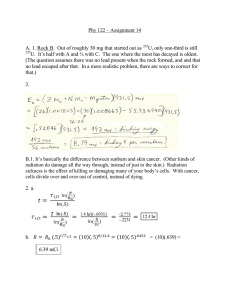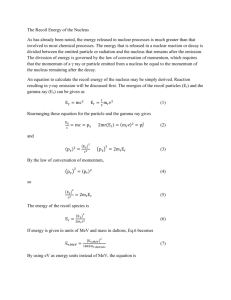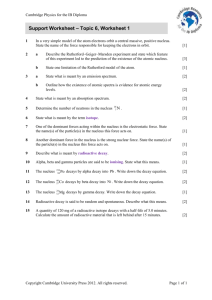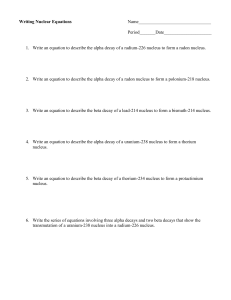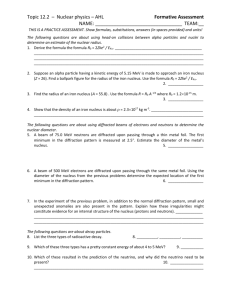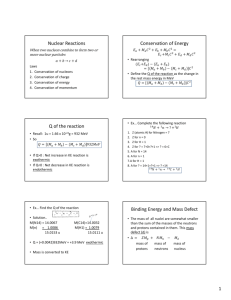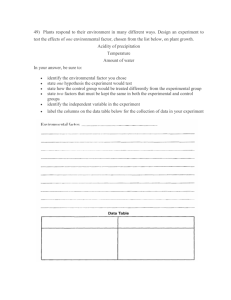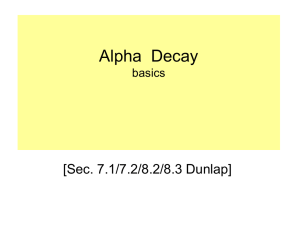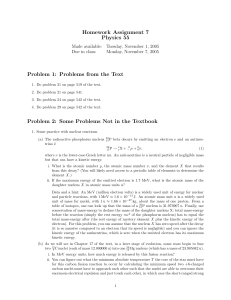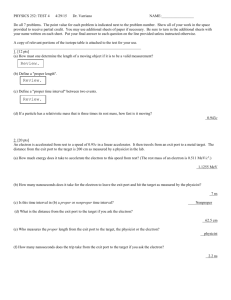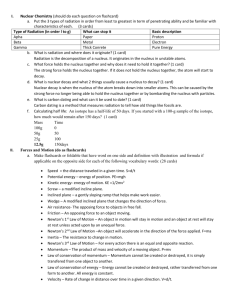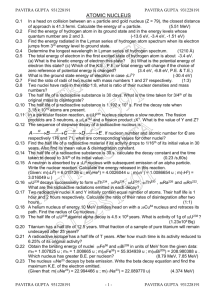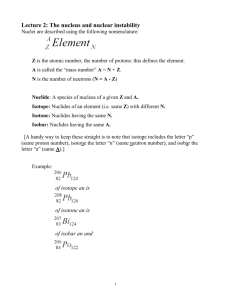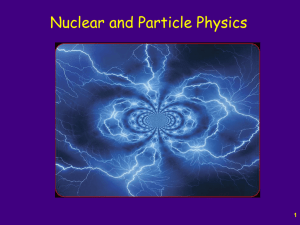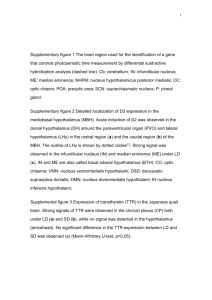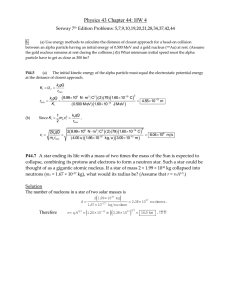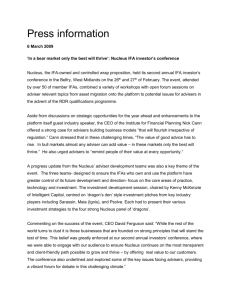Energy & Mass Questions Mass Changes A car of 1,000 kg speeds
advertisement
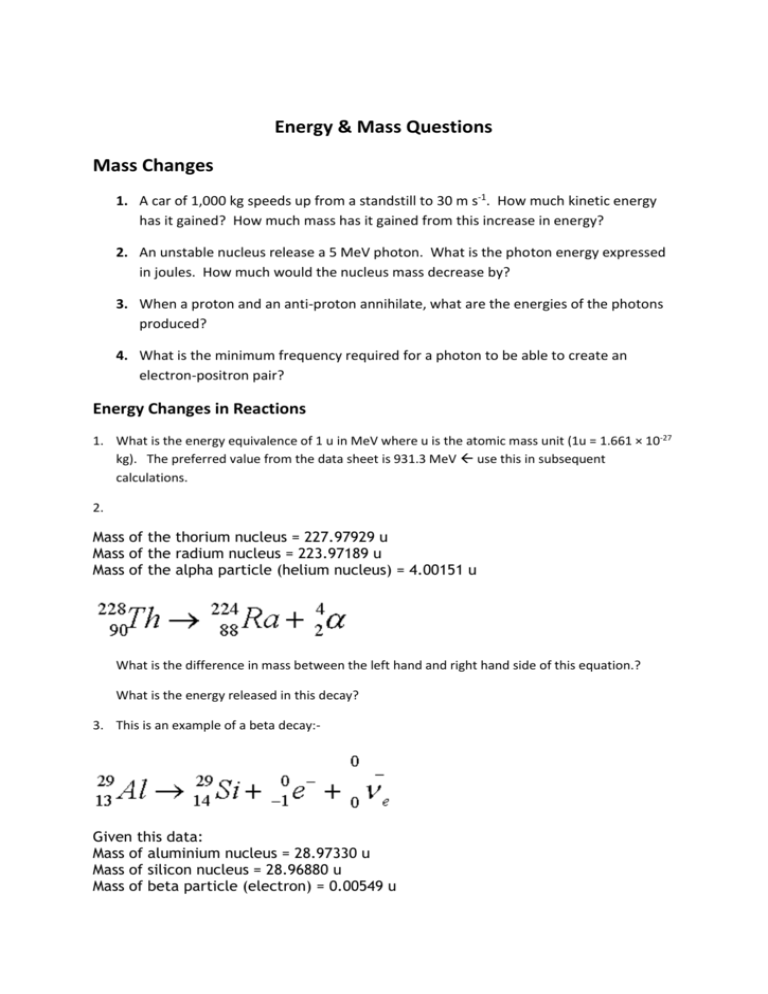
Energy & Mass Questions Mass Changes 1. A car of 1,000 kg speeds up from a standstill to 30 m s-1. How much kinetic energy has it gained? How much mass has it gained from this increase in energy? 2. An unstable nucleus release a 5 MeV photon. What is the photon energy expressed in joules. How much would the nucleus mass decrease by? 3. When a proton and an anti-proton annihilate, what are the energies of the photons produced? 4. What is the minimum frequency required for a photon to be able to create an electron-positron pair? Energy Changes in Reactions 1. What is the energy equivalence of 1 u in MeV where u is the atomic mass unit (1u = 1.661 × 10-27 kg). The preferred value from the data sheet is 931.3 MeV use this in subsequent calculations. 2. Mass of the thorium nucleus = 227.97929 u Mass of the radium nucleus = 223.97189 u Mass of the alpha particle (helium nucleus) = 4.00151 u What is the difference in mass between the left hand and right hand side of this equation.? What is the energy released in this decay? 3. This is an example of a beta decay:- Given this data: Mass of aluminium nucleus = 28.97330 u Mass of silicon nucleus = 28.96880 u Mass of beta particle (electron) = 0.00549 u Mass of electron antineutrino = 0 What is the energy given out by the above decay in MeV? What form does it take? Questions about the Strong Force 1. Estimate the magnitude of the Coulomb force of repulsion, assuming a separation of 1 fm. F 1 Q1Q2 40 r 2 Coulomb force, F is given by this equation, where Q1 and Q2 are the charges in C, r is the separation in m. 2. 3. 4. 5. 6. What is therefore the minimum magnitude of the strong force? Why does the strong force act only between its nearest neighbour? Calculate the work done in pulling a nucleon out of the nucleus. Convert the answer to Question 4 into MeV. why is it important that the strong force is repulsive at separations of less than 0.5 fm.

